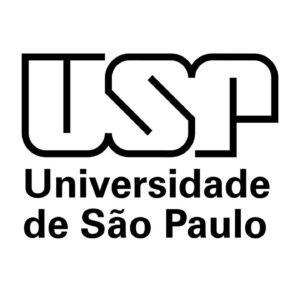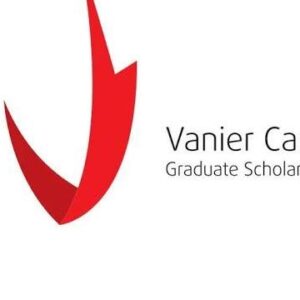Unlocking a world-class education at Harvard University may seem out of reach to many international students—but with Harvard’s commitment to meeting 100% of demonstrated financial need, fully funded scholarships are within your grasp. In this in-depth guide, we’ll explore everything you need to know about fully funded Harvard University scholarships for international students: how they work, who qualifies, how to apply, and key comparisons between undergraduate and graduate funding. Along the way, we’ll draw on official resources and expert analyses to ensure you have the most up-to-date, credible information at your fingertips.
Overview of Fully Funded Harvard University Scholarships
Harvard’s financial aid philosophy centers on need-based support: all admitted students, domestic and international, are eligible for scholarships that cover 100% of their demonstrated financial need. For undergraduates, this means that once your family contribution and any student work-study commitments are determined, the remaining costs are met through grant-based scholarships—never loans (Harvard College, Harvard College). More than half of all Harvard undergraduates receive financial aid each year, and one in four families pays nothing toward tuition (Harvard College).
For graduate students, the picture varies by program:
- PhD candidates in Harvard’s Graduate School of Arts and Sciences (GSAS) are guaranteed full funding for up to five years, covering tuition, health fees, and a living stipend via a blend of teaching fellowships, research assistantships, and traineeships (Wikipedia).
- Master’s students often receive partial scholarships—many programs subsidize at least half of tuition, with additional opportunities through departmental fellowships and external awards.
Together, Harvard’s endowment (over $50 billion) and its commitment to need-blind admissions (for first-year and transfer applicants, including internationals) ensure that financial barriers do not stand between qualified students and a Harvard education (Harvard College, Transfer Goat).
Eligibility Criteria for International Students
Before diving into the application process, it’s crucial to understand the criteria you must meet to be eligible for Harvard’s fully funded aid:
- Admission to Harvard University
- Complete the Common or Coalition Application (undergraduates) or the relevant graduate school application.
- Demonstrate outstanding academic achievement, leadership, and extracurricular engagement.
- Need-Based Financial Aid Application
- Undergraduates: Submit the CSS Profile, the Financial Aid Application through the Harvard College Applicant Portal, and the International Document Upload Service (IDOC) if required.
- Graduates: Follow each school’s financial aid instructions (e.g., GSAS uses a separate fellowship application).
- Timeliness and Completeness
- Aid application deadlines mirror or follow shortly after admissions deadlines. Missing any document may jeopardize your aid package.
- Demonstrated Need
- Harvard determines demonstrated need by assessing family income, assets, and other obligations. The award will cover the gap between this need and the family/student contribution.
- Citizenship and Status
- All international applicants—regardless of nationality—are eligible for need-blind admission and 100% need-based aid, with no preference given to U.S. citizens or permanent residents (Harvard College, Crimson Education).
Fully Funded Harvard University Scholarships: Key Comparisons
To clarify how funding differs across academic levels, the table below compares the main features of fully funded aid for undergraduates, master’s students, and PhD candidates at Harvard:
| Aspect | Undergraduate | Master’s | PhD |
|---|---|---|---|
| Aid Type | Need-based grants | Departmental fellowships, grants | Guaranteed funding packages (tuition + stipend) |
| Coverage | 100% of demonstrated need | Varies (often ≥50% tuition) | 5 years of full funding (tuition + living stipend) |
| Application Tool | CSS Profile + Harvard Applicant Portal | School-specific fellowship application | GSAS financial aid portal + department nominations |
| Need-Blind Admissions | Yes, for all applicants (incl. internationals) | Yes, but aid limited by program-specific resources | Generally yes; funding guarantee upon admission |
| Typical Award | $55,354 average aid per year | $20,000–$40,000 fellowship + tuition waiver | $40,000–$50,000 stipend + full tuition waiver |
| Work-Study Expectation | ~10–12 hours/week | Rare | Rare |
Sources: Harvard College Financial Aid (Harvard College); GSAS Funding and Aid (Wikipedia)
External Scholarships and Fellowships to Boost Your Funding
While Harvard’s internal aid covers the full demonstrated need, competitive external scholarships can augment your Harvard award or fund summer research. Key global opportunities include:
- Fulbright Foreign Student Program: Covers tuition, living stipend, and health insurance for graduate study and research in the U.S. (Shiksha).
- Quad Fellowship: A U.S. government initiative for STEM master’s and PhD students from Australia, India, Japan, and the U.S. Covers full tuition and a stipend.
- Aga Khan Foundation International Scholarship: Need-based awards for postgraduate studies in select fields, up to $20,000 annually.
- Home-Country Government Scholarships (e.g., Saudi ARAMCO, China Scholarship Council): Often paired with Harvard’s aid to cover additional living costs.
- Private Fellowships (e.g., the Rotary Peace Fellowship, Schmidt Science Fellows) for specialized research projects, sometimes available to Harvard affiliates.
When reporting outside awards, remember that Harvard applies them first to replace any student employment expectation, then to reduce scholarship funds dollar for dollar (Harvard College).
Application Process: Step-by-Step Guide
- Research and Prepare Early
- Register for the CSS Profile and gather financial documents (tax returns, bank statements).
- Identify external scholarships with deadlines before or around Harvard’s aid deadlines.
- Submit Admissions Application
- Undergraduates: Early Action (Nov 1) or Regular Decision (Jan 1).
- Graduates: Varies by school—check deadlines on each program’s website.
- Complete Financial Aid Forms
- CSS Profile: Opens Oct 1. Deadline typically Jan 1 (EA) or Feb 15 (RD).
- IDOC: Upload required tax documents promptly.
- Additional Forms (for graduates): Fellowship applications via GSAS or professional schools.
- Review and Verification
- Harvard may request clarifications or additional documents—respond within 10 business days.
- Receive Aid Notification
- Undergraduates: Aid offers released in tandem with admissions decisions.
- Graduates: Funding notifications often follow admission letters, or are detailed in fellowship award packets.
- Accept Your Offer
- Confirm your financial aid package by the deposit deadline.
Implications and Insights into Harvard’s Financial Aid Dynamics
- Equity and Access: Harvard’s need-blind, all-aid-meets-need policies rank among the most generous worldwide, making it more affordable for many students than top public universities (Investopedia).
- Endowment Power: With a $50 billion-plus endowment, Harvard leverages hundreds of endowed funds to sustain its aid programs, including transformative gifts like Ken Griffin’s $150 million donation to the Faculty of Arts & Sciences Scholarship Program (Harvard College).
- Global Competitiveness: By offering the same aid terms to internationals, Harvard attracts top global talent, enhancing cross-cultural exchange and research collaboration.
- Criticisms and Lawsuits: Despite its need-blind ethos, some argue that legacy preferences and yield modeling can indirectly disadvantage high-need applicants. An ongoing lawsuit examines potential unintended effects, though Harvard maintains it does not consider financial need in admissions decisions (Reddit, U.S. News & World Report).
Tips to Maximize Your Scholarship Chances
- Showcase Need Clearly: Complete all sections of the CSS Profile fully—omissions can understate your true need.
- Demonstrate Merit: While aid is need-based, the admissions committee evaluates academic and extracurricular strength first—invest in test prep, essays, and recommendations.
- Apply Early: Early Action applicants receive aid decisions sooner and may find more flexibility in external scholarship timelines.
- Communicate Proactively: If your financial situation changes (e.g., job loss, medical expenses), contact Harvard’s Financial Aid Office immediately for a reassessment.
- Explore Departmental Fellowships: Graduate students should research program-specific fellowships, teaching/RA appointments, and cross-registration grants.
Harvard University’s promise to meet 100% of demonstrated financial need—coupled with need-blind admission for international applicants—transforms what once felt like a distant dream into an achievable reality. By understanding eligibility criteria, mastering the application process, and exploring both internal and external funding avenues, you can unlock the door to a Harvard education without the weight of unmanageable debt. Start your journey today: visit the Harvard College Financial Aid website to calculate your net price and take the first step toward Harvard.





